
|

|
|
Home Site Search Contact Us Subscribe
|
|
|
Informed by Learning: Interview with Joe Valerio and Randy Mattheis of Valerio Dewalt Train Associates about education for the future at the University of Chicago Laboratory Schools "We wanted to dive deeply into the culture of the school and understand its core values, so one of the first things we did was to participate in its daily life." By ArchNewsNow February 19, 2014 October 2013 saw the opening of Earl Shapiro Hall, the new early education center for the University of Chicago Laboratory Schools. It’s the first phase of a multiphase expansion and renovation that the venerable institution – founded by philosopher John Dewey in 1896 – embarked on in 2007. Renovation of the school’s existing Gothic Revival campus is underway, and a new arts wing is also planned. Joe Valerio, FAIA, and Randy Mattheis, AIA, principals of Valerio Dewalt Train Associates, which designed the project with FGM Architects, talk about the unusual role that research played in shaping the design.
How did the design for this project evolve, and where did the research element come in?
Joe Valerio: The University of Chicago invited a long list of firms to send qualifications for the Laboratory Schools project. FGM Architects was one of those firms – they’re well-known for their schools – and after going on a walkthrough at the university, FGM called and asked if we were interested in joining forces. We thought they would be a great partner, and we’ve been interested in working for the University of Chicago for years. We immediately said, “We need to find out more about the future of education and bring that information to bear.” And so our two firms submitted a qualifications package that emphasized this.
Randy Mattheis: At the interview, we presented our approach: an exhaustive research phase to start, along with the programming. We would look at best practices and benchmarking, we would have conversations with stakeholders, and we would immerse ourselves for a couple of weeks – we would essentially live at the school. And we would look beyond the project to ask, “Where is education going in the next 10, 20, 50 years?”
What did the immersion phase involve?
JV: We wanted to dive deeply into the culture of the school and understand its core values, so one of the first things we did was to participate in its daily life. We attended classes in every division, from the nursery and kindergarten all the way up to high school classes. One day, we helped prepare and serve lunch to the kids. Randy even got up at 6:00 one morning and rode the bus with kids from the Near North Side.
RM: There’s actually a stop in front of the building where I live!
JV: We went to plays. We went to a high school varsity basketball game. We watched kids being dropped off and picked up. I spent an entire day shadowing a high school student.
What else?
JV: All of this started orienting us to the different constituencies involved in the school. We also interviewed faculty, parents, students, staff, and administrators. We identified best practices of other school facilities. We assembled a “future of education” committee, made up of representatives from the Laboratory Schools – staff members, teachers, a board member – and representatives from our firm and FGM Architects. The committee sought out various kinds of research, including forecasts about cultural trends, scientific advances, and the thoughts of leading scientists and educators. We ended up with six thick, three-ring binders of information.
RM: They included all of the reading that we did, transcripts from the interviews that we conducted, notes from all 64 stakeholder meetings. We ended with a visioning session, where we established the overall direction for the project.
What kinds of ideas came out of the research, and how did they inform the design of the building?
JV: One important point that we found was that school buildings need to focus on the child, not the curriculum. Most schools are designed around the curriculum – they try to create a perfect alignment between the curriculum and the building. But curriculums change.
RM: And the curriculum in the Laboratory Schools is intentionally open-ended. So focusing on the child instead means a building that can respond to an open-ended curriculum.
JV: Another thing we found when we were identifying best practices is that some of the most successful schools encouraged teachers from different classrooms to interact strongly with one another. It allows them to learn what's working and what isn't. If you don't have that, teachers only interact with one another at lunch or after school. So we set up the classrooms to facilitate team teaching. We organized the classrooms in pairs, and each pair flanks a shared breakout room. The teacher from one class can move into the other, and kids from different classrooms can interact with one another. The school has a team teaching concept, because there’s a head teacher in each of these classrooms, plus two assistants.
RM: There’s also a lot of research indicating the importance of natural light everywhere – corridors, classrooms, and stairs. One study of office spaces found that a daylit staircase is used 30 times more often than one with no daylighting. In other words, when people walk up and down the stairs, they want a view. So we made sure the staircases are all daylit, and they all have views. When people come to the school for the first time, they’re surprised to see how many kids are circulating up and down the main staircase.
JV: Daylight was so important. Each classroom’s exterior wall, every square inch of it, is glazed.
RM: It was also important to the university that the building be part of the community. People walking by Stony Island Avenue would look into a glassy entrance and have a sense of both welcome and the significance of the university in the community.
There are also an unusual number of outdoor spaces available to students.
JV: Yes, our research identified that, especially for very young kids, associating an outdoor play area with every classroom is crucial. Each of the nursery and kindergarten classrooms has its own direct access to an outdoor area.
RM: We created an outdoor courtyard that opens to Stony Island Avenue. It's secured, but you can see the street from it. There is an enclosed play space. And on the third floor, on the roof, we placed a large outdoor play area. It's normal for a school to have play areas that are directly accessible from the ground floor, but it's unusual to have this wide variety of spaces, each with its own character.
JV: Another thing that the research showed was that to be truly child-oriented, the building has to provide space for a kid to experiment on his own. It's counterintuitive in school design to create un-programmed space, and there are only a few schools in the country that have it. At Earl Shapiro Hall, there are four large, un-programmed, flexible spaces called Learning Labs used for short- or long-term projects. These rooms have glass walls so what’s going on inside is visible from the hallways. This kind of transparency helps demystify the educational experience and helps draw students into new areas of interest and activities.
RM: The school’s whole approach is focused around John Dewey’s “learn by doing” philosophy. Our goal was to create a school building that would best allow kids to do just that.
|
(click on pictures to enlarge) 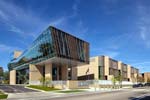 © Barbara Karant University of Chicago Laboratory Schools Earl Shapiro Hall: The library hovers over the entrance, a powerful symbol of books and the history of knowledge, floating over a glassy lobby space welcoming all to a place of learning. 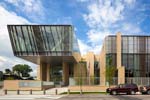 © Barbara Karant The ratio of metal vertical fins and mullions is based on the Fibonacci sequence. The library acts as a focal point, dramatically cantilevering over the main entry. 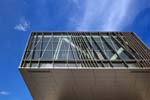 © Barbara Karant Mullions are set on modules of the Fibbinocci sequence describing the interplay of the rational structural grid and a map of the unknown. 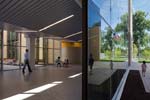 © Barbara Karant The use of the un-programmed learning labs and outdoor courtyards are an extension of the classroom. 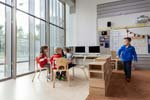 © Chris Kirzeder Classrooms were designed to maximize flexibility and views of the outdoors. Ground floor classrooms feature direct access to outdoor playspaces. 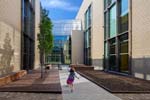 © Barbara Karant The flow of indoor and outdoor space was a primary design focus. A central courtyard provides natural light and views from the corridors throughout the building. 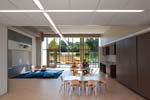 © Barbara Karant Classrooms are filled with daylight and many open to a dedicated outdoor garden; learning tools for self-directed learning are at hand. 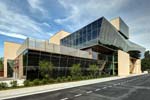 © Matt Dula The south wing of the building features a custom curtain wall design that tips outward, reducing solar heat gain. 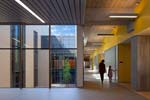 © Barbara Karant Adding to the transparency of the building, a series of glass walls are used from the south end to the northern interior to provide a visual connection through the entire school. 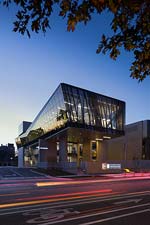 © Barbara Karant Extending over the main entry and surrounded by a custom curtain wall, the library glows at night. 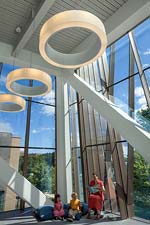 © Barbara Karant A soaring story-telling area is one of many varied spaces within the library. 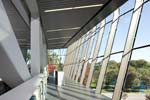 © Barbara Karant The library cantilevers above the main entry and lobby, providing a picturesque view to Jackson Park. 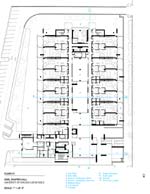 Valerio Dewalt Train Associates First floor, Earl Shapiro Hall 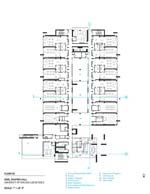 Valerio Dewalt Train Associates Second floor 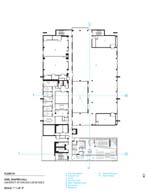 Valerio Dewalt Train Associates Third floor  Valerio Dewalt Train Associates Section A  Valerio Dewalt Train Associates Section B  Valerio Dewalt Train Associates Section C |
© 2014 ArchNewsNow.com